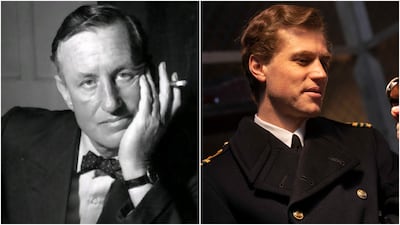It was one of the most daring — and daft-sounding — plans in the Second World War. Operation Mincemeat, as it was called, was devised by British Naval Intelligence in 1943 to fool Adolf Hitler and his Nazi generals. Charles Cholmondeley, a former Royal Air Force pilot who worked for MI5, and Ewen Montagu, of Naval Intelligence, were the men orchestrating the scheme — one that came from a document known as the "Trout Memo" because it compared tricking Hitler with going fishing.
In the end, they snagged a whopper.
With the war at a crucial point, British Prime Minister Winston Churchill wanted to send troops into Europe via the island of Sicily. But to make it safe for soldiers to land, there needed to be a distraction, something that would take German regiments away from the Mediterranean hot spot. And so the idea was to use the ultimate sleight of hand, making the Nazis think the Allies were instead planning to invade Greece and Sardinia.
Quite how they managed this is a remarkable story — one that’s now been turned into a movie, Operation Mincemeat, directed by Shakespeare in Love’s John Madden and starring Colin Firth and Matthew Macfadyen as, respectively, Montagu and Cholmondeley.
The scheme involved taking a corpse from a morgue, dressing him in military fatigues and placing upon his person documents that revealed the fake plan of attack. Then his body would be slid into waters in the Gulf of Cadiz in southern Spain, waiting to be picked up.
Yet this is just the outline of an increasingly complex plan that left no detail to chance. The corpse is thought by many to belong to a homeless Welsh man named Glyndwr Michael, who had died in St Pancras hospital in London after ingesting rat poison. Such a painful death came with an advantage; while the plan intended to make it look as if this fictitious British soldier had drowned after a plane crash, the poison would be nearly impossible to detect if an autopsy was conducted after the body was hauled out of the water.

Given a false identity — Major William Martin — this dead soldier was kitted out with personal effects to make him seem all the more real. Notably, a photograph of MI5 secretary Jean Leigh — showing her next to the River Thames in Oxfordshire — was placed in his briefcase. The inscription “Till death do us part. Your loving Pam” was added to the image, a subtle detail to further embellish the idea that Martin was a British fighter with a loved one back home. Michael’s corpse was then delivered to Spanish waters in the dead of night, by submarine HMS Seraph.
While it was Montagu and Cholmondeley who put the plan into action, the idea is said to have initially come from a memo circulated by Admiral John Godfrey, the director of British Naval Intelligence, in 1939. And yet many believe that the source for this macabre, morgue-raiding idea came from Godfrey’s deputy — one Lieutenant Commander Ian Fleming, the man who would later go on to invent James Bond, writing more than a dozen novels starring the MI6 spy also known as 007. Godfrey was even said to be the inspiration for Bond’s boss, M.

It certainly feels like a plot straight out of a Bond story. In the film, Johnny Flynn, the young British actor who came to prominence in the 2017 film Beast, plays Fleming, as a suave fellow click-clacking away at his typewriter, working on a “spy novel” in his spare time. As farfetched as it all sounds, the script is based on assiduous academic research, courtesy of the 2010 book Operation Mincemeat: The True Spy Story that Changed the Course of World War II, written by historian Ben Macintryre.
While many of the details were hidden away under the Official Secrets Act for many years, the ploy was not unknown; Montagu had written his own account, The Man Who Never Was, which in 1956 was turned into a film by Ronald Neame, starring Clifton Webb and Gloria Grahame. That film drifted into fantasy, with a subplot about a pro-German Irish spy who examines the fake girlfriend, played by Grahame.

Madden’s Operation Mincemeat, however, sticks more rigorously to the facts, thanks to documents unearthed by Macintryre. As the historian wrote, after finding an uncensored report of the operation left by Montagu after he died in 1985: “If my discovery of t—hese papers sounds like something out of a spy film, that may be no accident: Montagu had a rich sense of the dramatic. He must have known they would be found.”
Not only were his papers found, but they formed the basis for a book and now the film — which both celebrates the daring efforts of Montagu and Cholmondeley, and makes a hero of sorts out of Glyndwr Michael, who lived a tough, tragic existence, but found nobility in death.
The big question remains, just how effective was Operation Mincemeat? Certainly, when 160,000 Allied troops invaded Sicily on July 10, 1943, it appeared the Nazis were fooled into diverting soldiers towards Greece and Sardinia. For Churchill, it was a major triumph — allowing the Allies to invade Italy and destabilise the relationship between Hitler and Italian leader Benito Mussolini, and saving thousands of lives because troops were given a fairly unimpeded passage into Sicily.
All this from an idea that might just have come from the man who invented James Bond. You couldn’t make it up if you tried.
Operation Mincemeat opens in cinemas on May 5

